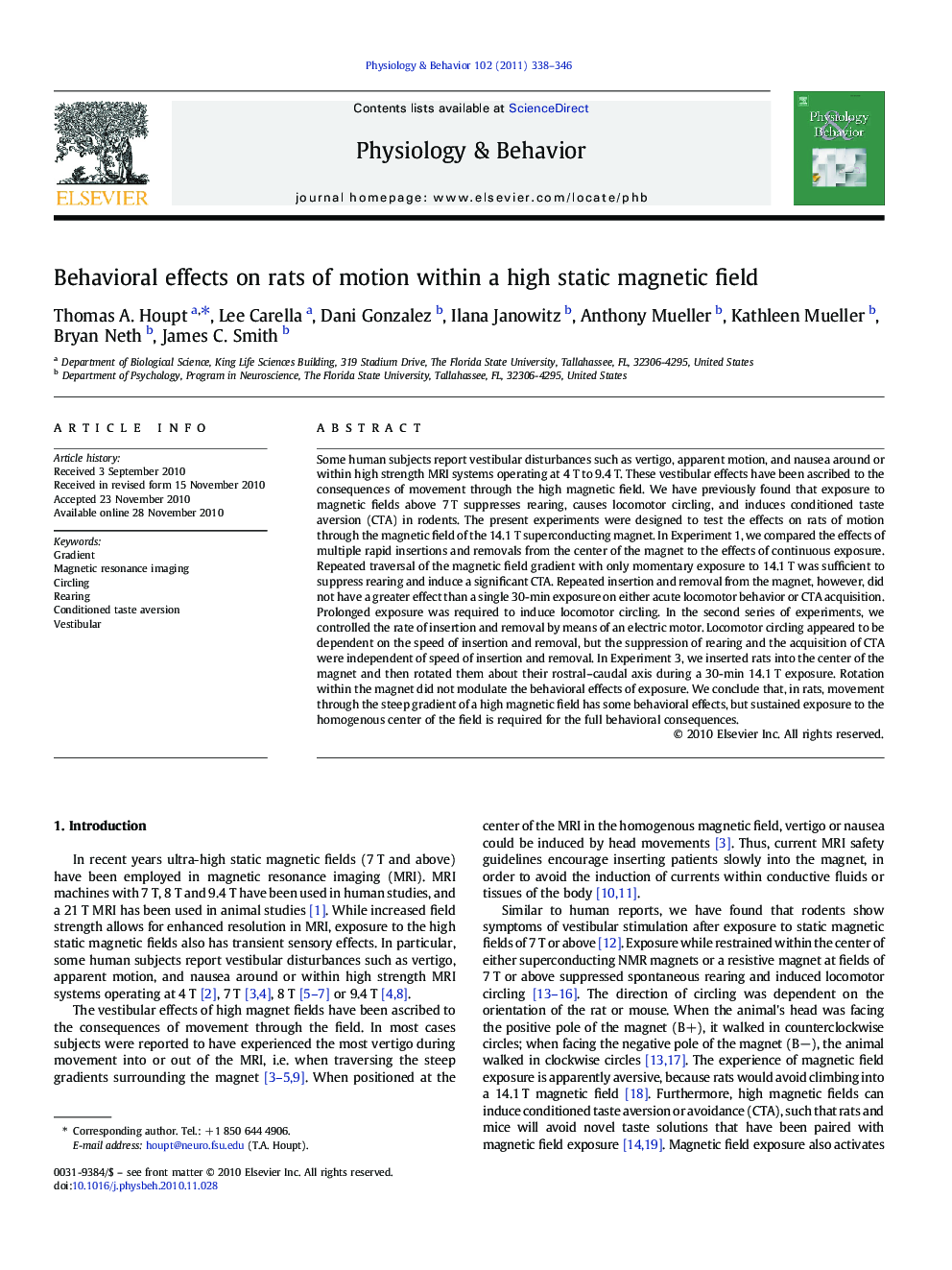| کد مقاله | کد نشریه | سال انتشار | مقاله انگلیسی | نسخه تمام متن |
|---|---|---|---|---|
| 2844845 | 1571207 | 2011 | 9 صفحه PDF | دانلود رایگان |

Some human subjects report vestibular disturbances such as vertigo, apparent motion, and nausea around or within high strength MRI systems operating at 4 T to 9.4 T. These vestibular effects have been ascribed to the consequences of movement through the high magnetic field. We have previously found that exposure to magnetic fields above 7 T suppresses rearing, causes locomotor circling, and induces conditioned taste aversion (CTA) in rodents. The present experiments were designed to test the effects on rats of motion through the magnetic field of the 14.1 T superconducting magnet. In Experiment 1, we compared the effects of multiple rapid insertions and removals from the center of the magnet to the effects of continuous exposure. Repeated traversal of the magnetic field gradient with only momentary exposure to 14.1 T was sufficient to suppress rearing and induce a significant CTA. Repeated insertion and removal from the magnet, however, did not have a greater effect than a single 30-min exposure on either acute locomotor behavior or CTA acquisition. Prolonged exposure was required to induce locomotor circling. In the second series of experiments, we controlled the rate of insertion and removal by means of an electric motor. Locomotor circling appeared to be dependent on the speed of insertion and removal, but the suppression of rearing and the acquisition of CTA were independent of speed of insertion and removal. In Experiment 3, we inserted rats into the center of the magnet and then rotated them about their rostral–caudal axis during a 30-min 14.1 T exposure. Rotation within the magnet did not modulate the behavioral effects of exposure. We conclude that, in rats, movement through the steep gradient of a high magnetic field has some behavioral effects, but sustained exposure to the homogenous center of the field is required for the full behavioral consequences.
Research Highlights
► Moving rats in and out of a 14.1 T magnet reduced rearing and induced taste aversion.
► Prolonged (motionless) exposure to 14.1 T was required for locomotor circling.
► Speed of removal was correlated with amount of circling, but not with taste aversion.
► Continuous rotation within the magnet did not amplify the effects of exposure.
► Motion and static field exposure both contribute to effects of a high magnetic field.
Journal: Physiology & Behavior - Volume 102, Issues 3–4, 1 March 2011, Pages 338–346